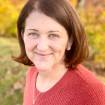You are here
"Say What, Say Huh?" Examining How We Communicate
The Strategies to Repair Equity and Transform Community Health (STRETCH) 2.0 Initiative brought together over 150 participants for its second national convening on June 5, 2024. During the virtual event, speakers shared expertise, strategies and insights on how to use bi-directional communication—an interactive, two-way process that prioritizes listening, collaboration and an ongoing exchange of ideas—to improve community health.
To illustrate how bi-directional communication works, event moderator Melissa Green, MPH, invited participants to imagine two dancers moving effortlessly across a dance floor.
“Good dancers move both independently but also in smooth unison,” said Green, deputy director for communication and recruitment for the Clinical Scholars Program at the Center for Health Equity Research at the University of North Carolina at Chapel Hill. “Similarly, good bi-directional communication is like good dancing. Partners are listening to each other, they're checking in.”
The event, titled “Say What, Say Huh?”: A Look into Bi-directional Communication through a Health Equity Lens with Public Health Practitioners, was hosted by the Association of State and Territorial Health Officials (ASTHO), the Michigan Public Health Institute (MPHI) and the CDC Foundation. With support from the Robert Wood Johnson Foundation, the three organizations partner on the STRETCH Initiative, helping create strong, lasting partnerships between public health agencies and community organizations to improve local systems to meet the needs of all communities.
The panel included professionals from public health organizations that participated in the first year of the STRETCH Initiative who shared how they apply bi-directional communication in their work.
Godwin Nwando, MPH, community wellness manager for the Nevada Department of Health and Human Services, talked about how the state sat down with focus groups from communities experiencing disparities in health access, including LGBTQ+ communities, racial and ethnic minorities and rural tribal nations, to understand how to better meet their needs.
“With that, you’re really able to come up with a plan that is truly interactive with really all of Nevada, and not just Nevada that tends to get all the resources,” Nwando said.
Jade Ramsdell, performance improvement director for the Kansas Department of Health and Environment, explained that seeking out diverse community perspectives when developing projects and evolving their processes throughout has been critical to the success of programs in her state.
“Our programs and interventions are becoming better tailored to meet specific needs and preferences of community,” Ramsdell said.
Providing accurate translation is an important way to engage with linguistically diverse communities, emphasized Christina Pacheco, director for the Communities Organizing to Promote Equity (COPE) initiative at the Kansas Department of Health and Environment. The state has a large indigenous population from Central America and some of the languages are not written and require spoken translation.
“Community members are incredibly grateful when you put in the effort to do those things,” Pacheco said. “Something that you wanted to only do in 30 minutes may end up taking two hours because of having to translate across languages, but the relationship you build in that process is invaluable.”
Participants were also invited to join the conversation—sharing their own experiences, successes and struggles in putting bi-directional communication into practice.
To learn more, we invite you to watch the full STRETCH national convening: "Say What, Say Huh?”: A Look into Bi-directional Communication through a Health Equity Lens with Public Health Practitioners.
For more about the STRETCH initiative, visit our page. If you would like information on how to sign up for the next STRETCH national convening, sign up for our STRETCH newsletter.
Support for STRETCH was provided by the Robert Wood Johnson Foundation. The views expressed here do not necessarily reflect the views of the Robert Wood Johnson Foundation.
